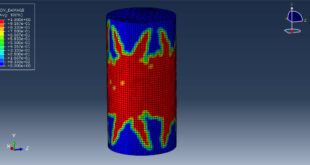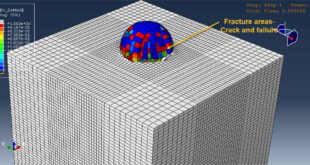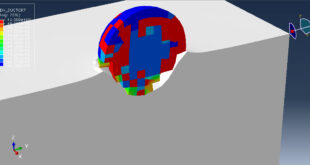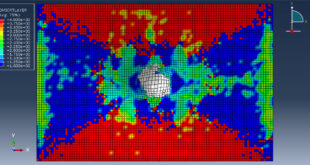In this tutorial, the Simulation CEL explosion over a steel column and concrete foundation in interaction with soil in Abaqus has been studied. The steel column and steel plate are modeled as a three-dimensional solid part. The TNT and soil are modeled as a three-dimensional part. The embedded beam inside the concrete is modeled as a wire part. The Eulerian part is modeled as a three-dimensional part. You can see a figure of the assembled parts at below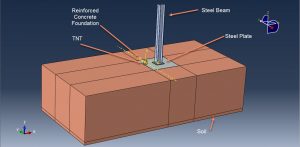
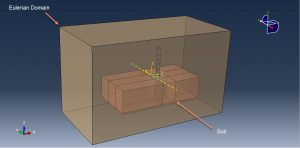
The steel material is used as an elastic-plastic material with ductile and shear damaged data. The ductile criterion is a phenomenological model for predicting the onset of damage due to nucleation, growth, and coalescence of voids. The shear criterion is a phenomenological model for predicting the onset of damage due to shear band localization. For the TNT the JWL equation of state is used. The Jones-Wilkens-Lee (or JWL) equation of state models the pressure generated by the release of chemical energy in an explosive. This model is implemented in a form referred to as a programmed burn, which means that the reaction and initiation of the explosive are not determined by shock in the material. Instead, the initiation time is determined by a geometric construction using the detonation wave speed and the distance of the material point from the detonation points. The soil material is model as elastic-plastic behavior. The dynamic explicit method is appropriate for this type of analysis. The general contact capability is used to consider all contact in the domain. The perfect contact between column and steel plate, steel plate and concrete foundation are assumed. The proper boundary conditions are assigned to the concrete foundation and Eulerian domain. The volume fraction technique is used to calculate the amount of soil and TNT inside the domain. The mesh should be fine to have a good calculation of the volume fraction
After the analysis, all results such as damage variable, stress, strain, failure….are obtainable. During the analysis, TNT causes huge pressure on the column and foundation. You can see some figures for the results below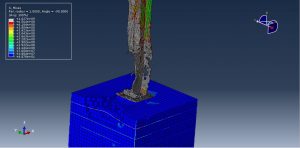
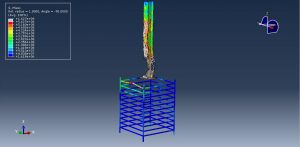
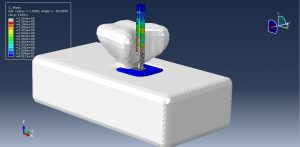
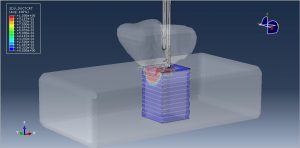
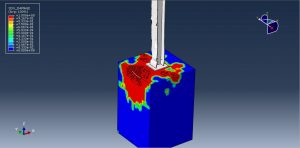
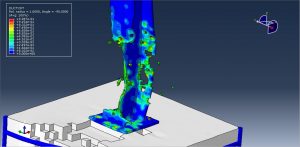
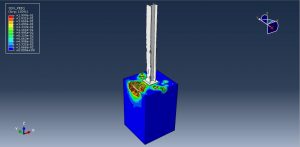
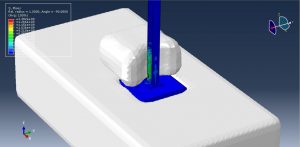
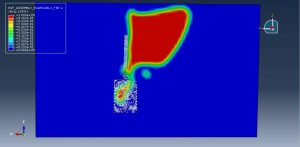
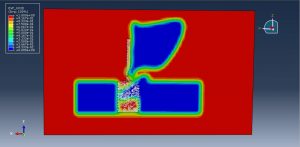
You can provide CAE ,INP,and English video files of this simulation here. The cost of these files is Thirty-Two Euros. you can click on the bellow bottom to beginning process
You can purchase the tutorial through a PayPal account, a Visa, or a Master card, just before payment,send me an email to this address: karampourp@gmail.com
 Abaqus tutorials Abaqus simulation and modeling
Abaqus tutorials Abaqus simulation and modeling
